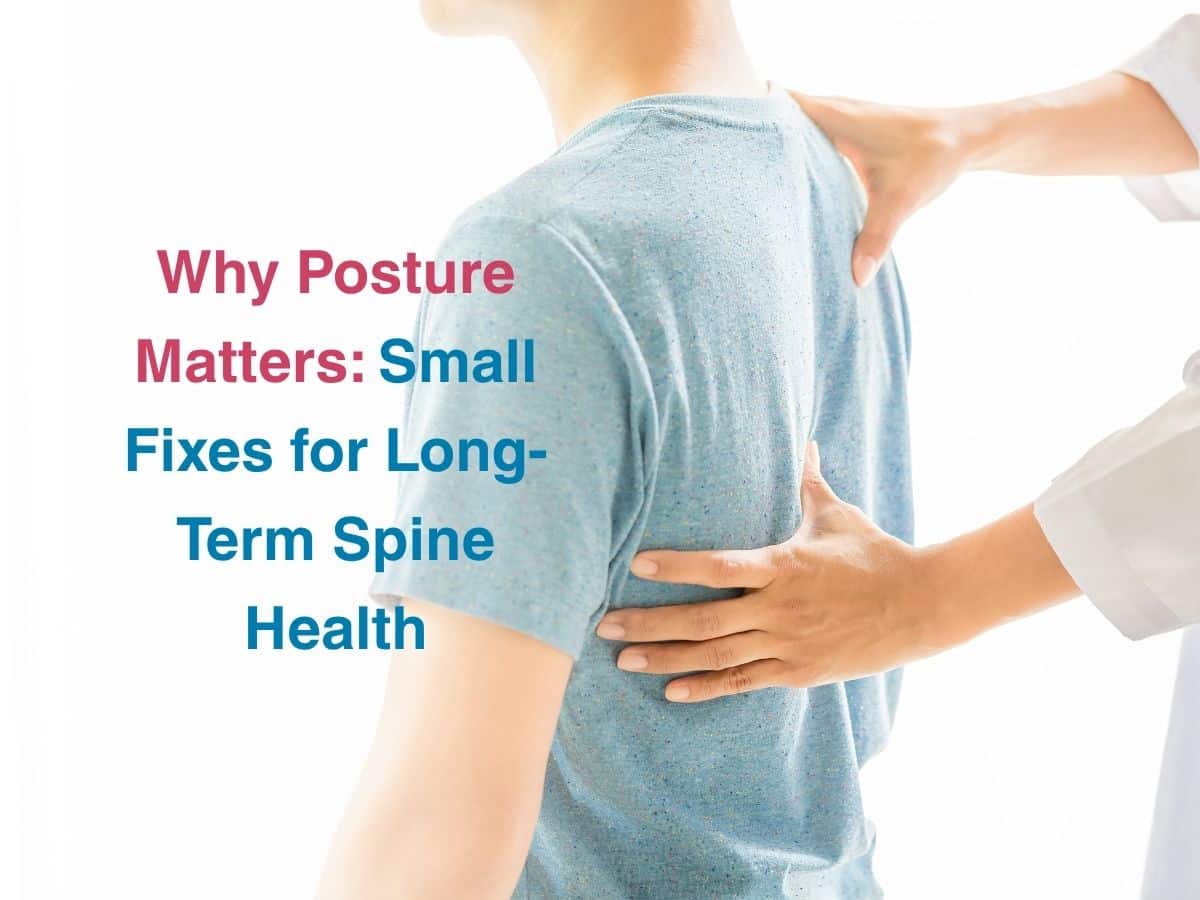
Why Posture Matters: Small Fixes for Long-Term Spine Health

Slouching on sofas, chairs or contorting the body in weird ways while working from home or sitting have become a norm these days. People attribute poor posture to nothing more than some probable pain or other minor issues. But, what if we told you that good posture is what helps your bones and joints function well, for the longest time possible? Your posture in the simplest of terms is how you hold yourself – when you sit or stand and are still. The musculoskeletal system works really hard to make all of these actions- like sitting or standing effortless, so you can keep your balance and don’t fall off randomly. But, posture is fluid too- changing it can help you complete a variety of tasks. Since everyone has a unique body, their posture is also going to be unique. All of us maintain 2 types of postures- static (when you are in one spot) and dynamic posture (when you move, but still remain straight or keep your balance and don’t tip or fall off), respectively.
Importance Of Good Posture
There is no correct or wrong posture per se, but how you hold yourself up, comfortably, without placing undue strain on certain parts of your body counts as good posture. The best way to ensure that you are in posture is to make sure that your spine is properly aligned. The spine has 3 curves- first at the neck, second at the back and the third at the lower back. Since your spine is already gently curved, there is no need for you to add to it by bending or flexing in any unusual way. When you stand or sit in this way, you can prevent any chronic pains, excessive wear and tear to the bones and joints and reduce stress on them too.
Effects Of Bad Posture On Spine Health
Some of the common side effects of having poor posture include-
- Neck pain
- Back pain
- Stiff neck and back.
- Lower back pain
- Lead to poor flexibility
- You may have a lower range of motion too.
- Your balance may be off at times.
These are some long term health risks of poor posture and can increase your risk of suffering from injuries- if you play sports for example, as dynamic posture can get affected.
Posture Correction Tips
Some practical ways you can remember, to stay in posture include-
- Keeping your head above your shoulders. No craning or hanging your neck down.
- Your shoulders need to be above the hips always, unless you are sleeping. This will help prevent slouching.
- To keep your lower body stable, stand with your legs apart and make sure to keep the weight on the balls of the feet. While sitting, ensure that your feet are flat on the ground.
Conclusion
Daily habits for maintaining good posture include prioritising good posture and thinking about making adjustments consciously, at least a few times in a day. You should wear proper footwear which fit well and you should try to activate your core too, at times. Finally, you should make sure to take care of your health by eating well and exercising often. There is however no need for you to keep thinking about your posture, as you may get stressed or even overcorrect at times, Plus, if your day is overwhelming, you can forget to do so and that is totally fine. Just remember to take breaks and stretch whenever possible and you will feel most of the strain go away. Pain will also go down and you will begin to feel better in no time.






